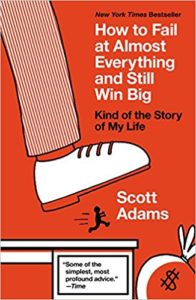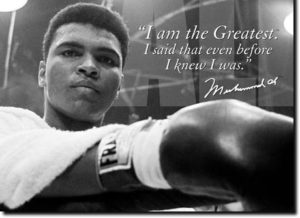 If you want to coach a varsity team or even a college team, it is inevitable that you will, at one time or another, find yourself in front of an interview committee. I have seen it become a common practice for selection committees to all sit around a conference table where they ask a prospective coach a pre-assembled list of interview questions. While there is often one or two questions that vary from school to school, there are also a number of interview questions that many schools use. Coaches who want to be hired should be prepared to answer these questions. Read them over (and the explanation that goes with each) so you are properly prepared the next time you interview for a coaching job.
If you want to coach a varsity team or even a college team, it is inevitable that you will, at one time or another, find yourself in front of an interview committee. I have seen it become a common practice for selection committees to all sit around a conference table where they ask a prospective coach a pre-assembled list of interview questions. While there is often one or two questions that vary from school to school, there are also a number of interview questions that many schools use. Coaches who want to be hired should be prepared to answer these questions. Read them over (and the explanation that goes with each) so you are properly prepared the next time you interview for a coaching job.
(1) Describe your Strengths / Weaknesses?
This is very common for corporate jobs. It must be in an HR manual somewhere. So, how are you going to answer?Strengths should line up with the job description and be truthful. My opinion is that it is important to show the value of your strengths. This should be what separates you from the other coaches they are interviewing.
Weaknesses are a trickier subject. Presenting your “weaknesses” as a strength is probably an expected answer and, as such, is unlikely to set you apart from other candidates interviewing for the job. A better approach would be do some real soul-searching and present a real weakness… with the steps you are taking to become better.
(2) Rules are broken … what are you going to do?
It is a common scenario for an interview question. “A player violates a rule right before “the big game”. What do you do? I’ve found that it is best to “stick to the rules”… while expressing your disappointment.
Another [often unwritten] part of this question is how would you prevent the situation from happening in the first place. I try to emphasize the setting of clear expectations early in the season. This way players (and parents) know what will happen if rules are broken.
(3) Describe your typical practice plan…
I have a general format that all my practices use (and it is TOP SECRET). If you are an AD looking for a Head Basketball Coach, contact me to schedule an interview and I will “spill my guts”. In an interview, if you can’t talk about how you plan your practices, the interview committee starts to question if you are really prepared to coach their team. It also doesn’t hurt to talk about how your practices change over the course of a season. (If you want to learn how I look at different parts of a basketball season, check out this article titled “4 Part Basketball Year”.)
(4) X’s & O’s Questions…
This is usually posed by a former coach that is on the committee. They are looking to see what you know about the game and how you would approach certain game situations. It can also be a trap if your approach does not match what the former coach expects. As an up-and-coming coach, we know that a “non-traditional approach” can often be very effective, especially if it is unexpected by the competition. In an interview though,you need to convince the committee that you know what you are talking about. Examples where you used your approach successfully can help show that, while it might not match “traditional thinking”, it definitely can get the job done.
The other part of the X’s & O’s interview questions is to find out what you are bringing to the team. If your approach relies on a full stable of high quality athletes and the “pipeline is empty” for these types of athletes at this school, you may be hurting your chances of being hired. On the other hand, if you can show them how you make better players out of the ones already there, you have a chance.
(5) Why do you want this job?
Everyone has their own reason for applying. The key is that your answer needs to make sense in the context of your background. If you have been an assistant for a while, it makes sense that you want to move up to the head coaching position and run your own program. Unless you are going for a college level coaching opening, you aren’t applying to coach for the money. I have my own reasons for applying for each job… and this is something that each coach has to think about for themselves. Be as truthful as possible. This is not the time to set of the B.S detectors for the interview committee because they want to know what motivates you. (And that it matches what they want to see from their new coach.)
Bottom Line…
Be prepared for all of these standard interview questions when you apply for a coaching position. Is this a complete list of interview questions? Of course not. What this list will do is get you thinking so that you can take your preparation one step higher. If you want to be good at coaching, you need to be good at interviews. Oh yeah, one more thing…
HERE IS A BONUS FOR EVERYONE WHO HAS READ ALL THE WAY DOWN TO HERE…
Questions for the interviewers…
At the end of almost every interview I’ve ever had, I have been given the opportunity to ask my own question(s). If you don’t have any questions, you were either not paying attention to the discussion during the interview or you have not put much thought into the information you need to evaluate whether or not this job is right for you. Here are some questions to get you started. Feel free to customize them to make them “your own”.
“Who will I be working with?”
This might be obvious based on who set up the interview and who is running it (e.g. the AD & Principal) but if there are any question about it, now is the time to ask. Another aspect of this is how they expect the communication process to be handled with parents of players. For a new coach who the parents are not comfortable approaching, they may take their complaints directly to the AD, Principal or even the school’s superintendent. As a coach, you want to head this off and address concerns before they become major issues.
“What are the key things that need to change [from the previous coach]?” “What are their expectations for the new coach?”
The previous coach left for a reason. Was their job not re-offered? Or did they see the writing on the wall (few quality players in the pipeline) and figured it was a good time to “retire”. As the new incoming coach, you might not get the full story (or they may decline to talk about it due to confidentiality reasons) but if you phrase it discreetly you may get some insights into what they want to see from their new coach. This gives you a chance to shine a light on how you are the best choice for the position.
“Since I, as the new coach, plan to raise the standards both on the court and off, how will this be supported by the school and parents?”
Some schools are happy just fielding a team and winning is not a priority. Maybe they are a “baseball school” or a “soccer school” and a winning basketball program is not a top priority. It is important that you, as the new coach, understand what support you will receive. It is likely that higher standards will not be appreciated, especially by the parents of players who do not meet those standards. Again, it is important to communicate with parents so they understand what you are trying to accomplish.
Are you looking for a coach that will build a competitive team? Or would you prefer someone who “keeps everyone [sort of] happy”?
This is another form of the question above. It will help you gauge where the school sees it’s basketball program. In my experience, the idea of “keeping everyone happy” is a fool’s errand and unlikely to happen. Another way to look at it is this… players earn their playing time based on what the coaches see in practice. If they want more time, they should talk to their coaches and put in more effort.
Fundraising is an important part of many athletic programs. Can you describe what is done at your school in terms of fundraising for the basketball program?
The amount budgeted for the team compared to what will need to be picked up by parents or outside sponsors is also good to know. If you can bring some fundraising ideas or, better yet, can involve parents in the process, you will be one step ahead of some candidates.
The end of the interview…
Always try to leave on a high note. SMILE. Sometimes something as simple as a smile and a good handshake is enough. The last question and the last thing you say is what will stick in the memory of the interview committee. (Assuming you did not mess up big time in the rest of the interview.) Stay positive and, as much as possible, leave on an up-note… and they followup after an appropriate amount of time.
Will this list of interview questions guarantee success?
I hope these interview questions will help make you more successful. Of course, they won’t magically move you to the top of the list if the committee has already made up their mind. In that case, the interviews are often just a formality so the committee can check off a box that says they held interviews. What does that mean for you as the “odd man out”? It means you got a chance to practice your interviewing skills and will do even better at the next interview. In basketball you don’t expect your players to hit 100% of their shots. Interviewing is a percentage game too. Hang in there and keep working to make your resume more attractive to potential employers. Do your preparation for every interview … and eventually the numbers will be in your favor! Good luck… unless I am interviewing for the same job. In that case, disregard everything in this article. 😉



 If you want to coach a varsity team or even a college team, it is inevitable that you will, at one time or another, find yourself in front of an
If you want to coach a varsity team or even a college team, it is inevitable that you will, at one time or another, find yourself in front of an  Everyone has problems. If you are alive, you have problems. They might be big, life-changing problems like a diagnosis of cancer or they could be minor inconveniences like a fly buzzing in your ear. That’s not why problem solving tactics don’t work. Problem solving is easier than you think, but I am getting ahead of myself.
Everyone has problems. If you are alive, you have problems. They might be big, life-changing problems like a diagnosis of cancer or they could be minor inconveniences like a fly buzzing in your ear. That’s not why problem solving tactics don’t work. Problem solving is easier than you think, but I am getting ahead of myself.

 Summer is when you can make huge improvements as a basketball player… especially if you grind. GRINDing is all about
Summer is when you can make huge improvements as a basketball player… especially if you grind. GRINDing is all about  Affirmations are a powerful way for you, as an athlete, to overcome ways of thinking that are holding you back from becoming your best. Society has programmed many “limiting beliefs” into your mind over your lifetime. If you have read my post about
Affirmations are a powerful way for you, as an athlete, to overcome ways of thinking that are holding you back from becoming your best. Society has programmed many “limiting beliefs” into your mind over your lifetime. If you have read my post about 

 This post is about the “Things I Know” when it comes playing basketball “the correct way”, i.e. the way that I like my teams to play. Each of these short “Things I Know” is followed by an action that players should carry out in the described situation.
This post is about the “Things I Know” when it comes playing basketball “the correct way”, i.e. the way that I like my teams to play. Each of these short “Things I Know” is followed by an action that players should carry out in the described situation. – excerpted from How Ronald Reagan Changed My Life by Peter Robinson
– excerpted from How Ronald Reagan Changed My Life by Peter Robinson
 Do you want to win? Do you want to win all of the time? Really? What if you did? What if every attempt was successful and nothing ever went wrong? What if it became way too easy to do? How long would it take for you to tire of it? Winning is special because it is so difficult to do. We tend to value things in direct proportion to the price we pay for them. We do not learn very much standing on the top of the summit. All of the becoming happens on the way up the mountain. I hope you are having a lot of challenges along your journey of a dream. Resistance makes you stronger. If you are not having problems your goals are too low.
Do you want to win? Do you want to win all of the time? Really? What if you did? What if every attempt was successful and nothing ever went wrong? What if it became way too easy to do? How long would it take for you to tire of it? Winning is special because it is so difficult to do. We tend to value things in direct proportion to the price we pay for them. We do not learn very much standing on the top of the summit. All of the becoming happens on the way up the mountain. I hope you are having a lot of challenges along your journey of a dream. Resistance makes you stronger. If you are not having problems your goals are too low. What if there were a series of 36 questions, a structured conversation, that was designed to make two people feel closer to one another? Could that increased connection or trust between teammates translate to higher performance for the team on the court or field of play?
What if there were a series of 36 questions, a structured conversation, that was designed to make two people feel closer to one another? Could that increased connection or trust between teammates translate to higher performance for the team on the court or field of play?